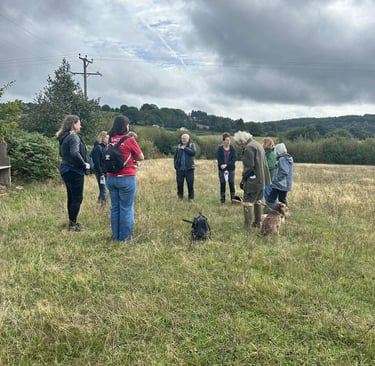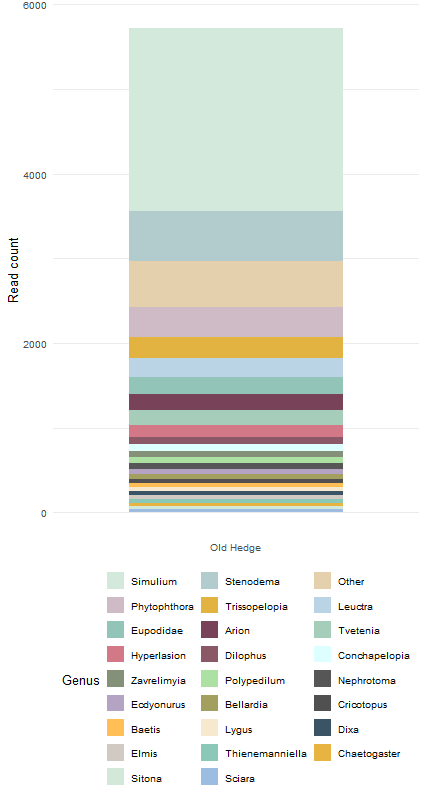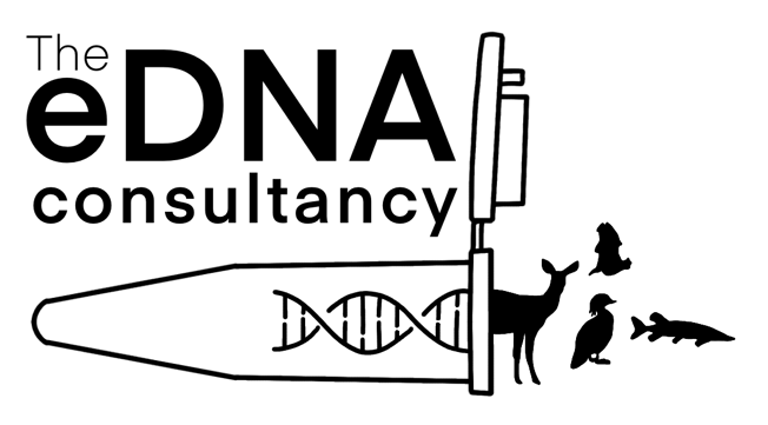
Rolling for Biodiversity
How Terrestrial eDNA Kits Reveal Hidden Invertebrate Communities
10/24/2025


In September 2025, we joined the Wye Valley National Landscapes team and local community members at Trellech Wet Meadow for the Climate Day of Action. We discussed our biodiversity work using eDNA and put a new idea to the test; Could our terrestrial eDNA roller kits reveal the invertebrate biodiversity of a hedgerow?
We split into two teams to sample two contrasting hedges: one an older, well-established hedge and the other a relatively newly planted hedge. Using our surface eDNA rollers, participants gently rolled across branches, leaves and surface vegetation. Back at our laboratory, the eDNA was extracted, amplified and sequenced to identify the invertebrate eDNA recovered from the rollers.


The results were striking. The older hedge sample revealed 126 invertebrate OTUs (Operational Taxonomic Units), that represent a rich community of beetles, flies, moths, mites and more. Of these, 84 were identified to species, including many taxa of ecological interest. By comparison, the newer hedge yielded just 9 OTUs, possibly reflecting the early successional stage and lower habitat complexity of young plantings. However only one sample was collected from each hedge and both samples were collected by different attendees so although the comparative data is exciting we wouldn’t say its statistically robust.
Altogether, just two roller eDNA samples detected over 100 unique invertebrate genera from the hedgerows in Trellech wet meadows. Our terrestrial eDNA kits reveal a broad and diverse array of insect taxa with minimal interference using a non-destructive sample method.
Twenty-five most common genera identified from the old established hedge, other genera are grouped.
Species of Note
Some of the key invertebrates that highlight the method’s versatility across taxonomic groups:
Garden chafer (Phyllopertha horticola) – Detected in both hedges, showing the roller method’s ability to pick up beetle eDNA. This is encouraging for monitoring noble and variable chafers, both UK Priority species.
Click beetles (Elateridae) – Detection of Athous bicolor and Agrypnus murinus shows that these elusive ground associated beetles can be identified.
Rove beetles (Stenus spp.) – The presence of Stenus nitidiusculus highlights the methods potential for detecting closely related conservation-priority species such as S. longitarsis and S. palposus.
Our results underline that terrestrial eDNA kits don’t just detect one group but they provide a window into the full invertebrate community, from pollinators to decomposers.
What This Means for Conservation Monitoring
Hedgerows are vital ecological corridors, supporting hundreds of invertebrate species that pollinate crops, recycle nutrients, and feed birds and mammals. Standard invertebrate monitoring relies on trapping or visual surveys, which can be time-intensive and biased toward visible or easily identifiable species. Terrestrial eDNA offers a non-invasive and scalable way to assess biodiversity, even in complex habitats.
While the Trellech Meadow results came from just two samples, they highlight the potential of eDNA rollers to revolutionise terrestrial biodiversity surveys. This approach can provide the monitoring evidence needed to demonstrate the impact of large-scale of habitat restoration, agri-environment schemes, and conservation interventions across the UK.
A Glimpse of What’s Possible
From a simple roll across hedge leaves, we revealed a thriving hidden world of more than a hundred invertebrate genera. As terrestrial eDNA methods continue to evolve, tools like our Terrestrial eDNA kit promise to make biodiversity monitoring faster, more comprehensive, and more accessible than ever before.
The eDNA Consultancy
Where our expertise meets yours
ADDRESS
Unit 4 & 5, Tanhouse Farm, Frampton on Severn, Gloucestershire, GL2 7EH, GB
INQUIRE ABOUT OUR SERVICES
Web design and graphics by Bear Bones
The eDNA Consultancy Ltd is registered in England and Wales 15508607. VAT no: 482885735 © Copyright The eDNA Consultancy Ltd. All rights reserved.
